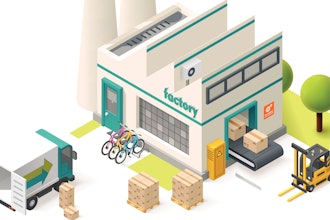If we truly want our business performance to change, reorganizing and issuing management directives are not enough. We must change behavior. Changing behavior takes planning too. Here are some thoughts.
It is not easy to genuinely change the way our teams and businesses operate. Many improvement initiatives plan by reorganizing, issuing directives, and possibly some training. We have all seen, however, that such a level of planning does not typically cause real change to occur.
The reason is that none of those elements change the way our people make decisions, respond to pressure, or change the types of pressure we induce. Therefore, while the surface appears different, the operational heart and soul of our organization remains the same. Thus, so does our performance.
If we want to plan behavioral change along with organizational and management changes, we need to have some idea where to start. That is the big gaping hole in all of the information and hype about all of the various programs we might adopt. They don’t include plans for the behavioral portion of the necessary planning.
Perhaps one of us will write a good book on the subject one day. In the mean time, however, I offer a few thoughts to get us all started. In a single post, I can’t cover all of the deep woods that are behavioral change, but I can provide some food for thought.
Here is the bullet list of things to consider when planning change. I’ll spend a few lines on each one to explain why they are important. How you use these thoughts to flesh out a plan for your own organization will need to be up to you, and it should be because every organization is unique.
- Modeling Behavior.
- Training.
- Coaching, Mentoring.
- Systems.
- Traditions, Beliefs.
- Environment.
It is important to understand that the above list is merely a list of important ingredients. To make your own stew, you will probably need some of each at a minimum. You may add your own in addition to these and focus your greater effort where you think you need it the most.
Modeling Behavior
The first thing to do is sit with your change leaders and clarify what behaviors are important for your new way. For example, if you are adopting Six Sigma, a critical behavior is using data and statistics to model and predict performance. Also, it is critical to make decisions based on minimizing variation.
Identify the behaviors that everyone needs to adopt. Once these are identified, ensure that your leadership is the first group to begin modeling these behaviors. Whatever your leaders’ behavior is, your personnel will adapt to it. Your leaders absolutely must model the behaviors required.
Training
Many times, with new behaviors, we need more than just a new set of guidelines; we need new skills. Make a detailed plan of what personnel need what skills, how the new skills will be delivered, in what order, and by whom. Consider where the training materials will come from and whether they use the language your people will find useful or appropriate to your business culture.
Coaching, Mentoring
Training is never a solution by itself. Never. Training doesn’t make anyone skilled. It also doesn’t cause a person to use the training. Training requires follow-through.
Make a plan for how your leaders, who are modeling the right behaviors, are going to coach and mentor their personnel through the change to new behaviors and the development of new skills. This process requires good leadership and trust.
Punish an unwillingness to get on board with the new way, but do not punish mistakes. No one will try something new if they fear making a mistake while on the learning curve. Accept that mistakes will happen and coach people through them. Focus on behavior more so than results.
Systems
Systems are sometimes considered when we plan changes, but often are not. A good example is enterprise resource systems configured for specific teams or for batch materials planning that are left in their configuration while trying to adopt a Lean production methodology. New programs have enough resistance from people without those people having to fight with their systems to do things differently.
Consider what systems, processes, policies, software, machines, or logistical chains are not configured to cooperate with the new behaviors you want. Do you need new systems to facilitate new skills? These can be critical planning considerations.
Traditions, Beliefs
This area of planning takes some long consideration in my experience. Plan for three things. First, what traditions, habits, or beliefs do you need to get away from? Make a plan to allow them to die peacefully. If you challenge existing beliefs, in particular, defenders of those beliefs will declare war on your new way. Don’t attack existing beliefs or traditions. Simply ask people to try new ones.
Second, determine what traditions, habits, and beliefs need to stay. Some parts of your culture are your strengths and you do not want to damage them. Make a solid plan for how you will protect and perpetuate them in the face of changing behaviors.
Third, decide what new beliefs, habits, and traditions you need. These can be very important when it comes to reinforcing your new behaviors. They often encompass reward and recognition or otherwise display the benefits of your new way of working.
Environment
Give some thought to how your workplace either enforces or inhibits your new program. If your new focus is on intimate, focused work teams, do you have enough work areas and meeting rooms for your teams to operate as teams? If the new focus in on efficiency and single-task resource planning, is your work environment conducive to focus, or is it noisy and distracting? If your new way is about innovation and creativity, is your environment sterile and dull, or inspirational?
Consider how your environment influences your habits and behaviors. Do not doubt that it does. Consider the messages on the walls, the noise levels, lighting levels, proximity to systems, equipment, and people, and interactions between groups. Also, understand that environment is as much to do with other behaviors as ambiance, which takes us back to the modeling behavior paragraph above.
When was the last time that you worked up a plan that included all of those elements and was directed at influencing behavior, not just organizations? The lack of planning around behavior is a great reason why so many change initiatives fail.
If you incorporate the above elements into your change initiative plans, your chances of success greatly improve. I have experienced it and planned it. It makes a huge difference.
Let me also offer a framework for planning the progress of your behavioral change. We don’t change our habits all at once and we don’t change them instantaneously. I’ve said many times, change is a process, not an event. Here is a framework for planning the change process.
Imagine a matrix. Draw it on a piece of paper as you read this description. Plan your change in 4 to 5 phases. The first is the current state. The last is the ideal state. Between those, select at least 2 other states, 3 is also good. I’ve used “Beginning, Improving, Succeeding,” before.
List the phases down one side of your matrix. I like to go from current state at the bottom to world-class at the top, but you can do what makes sense for you. Now, for each state identify the behaviors, metrics, and programs that represent your path to behavioral and performance change. These become the columns across the top of the matrix. We all know that no business operates without timelines, so add one last column for target “level-up” dates, but please don’t make this column the biggest priority.
With the matrix constructed, we can fill it out. The current state is easy if you are good at being honest about how things are. List today’s behaviors in the box for current state behaviors. Then list your current metrics and programs. Put today’s date in the last column.
The next few rows are a little more difficult. The ideal state row should be the easiest if you already spent your planning time addressing the elements listed above. List the ideal behaviors. For metrics, this is very important, answer how you will know that the behaviors are taking place. That’s right, don’t measure for results, measure for behaviors. It takes some creativity.
Here is an example metric for behavior. The behavior fits in a continuous improvement theme and says that engineers will identify and propose and lead improvement projects and initiatives to improve engineering and related processes. The metric is simply a number of improvement projects proposed per engineer and by all engineers collectively. You see how the metric measures the behavior? There may be different target levels for the Beginning level than the Improving level than the Succeeding level of the matrix.
With the behaviors and metrics identified, articulate the programs that are necessary to enable, drive, or affect the behaviors. For example, if engineers are expected to identify and lead process improvement projects, they might need a training and mentoring program to enable that behavior.
Keep the plan comprehensive, but simple. If you can’t fit the matrix on a single sheet of paper and read it, it’s too complicated. A b-size or 11” x 17” sheet of paper is OK if it is a really big change. (Yes, I live and work in the U.S. -- as my paper size reveals)
With the change process framework in place, monitor it carefully. Make regular reports to leaders, peers, and personnel concerning progress. It may be that your initial expectations for pace or metric targets were unrealistic and reality may call for some adjustment to the plan. However, don’t allow challenge to give excuses for “dumbing-down” your plan either.
Your organization gets to “level-up” to the next line on the matrix when the behavior metrics are satisfied. If you get to the Succeeding level, and can stay there for 2 business quarters or more without losing ground, you can discuss future plans for either becoming world-class and achieving the final ideal-state level, or adding another initiative for the next improvement focus.
Frankly, don’t stop until you know you are indeed world-class. Absolutely, don’t stop the pressure to change until you have at least stabilized at your Succeeding level of performance. If you lose momentum any time before that, the change will likely ultimately fail. Your organization will relapse and revert to old ways.
If you think that your organization can change its ways in a single year, you either lead a very small and intimate organization and have a great deal of interpersonal leadership over it, or you are in need of a reality check. For a large organization with multiple sites and a complicated or diversified culture, it will take years; think 3-5 to fully change habits and behaviors.
That’s about as much advice as I can fit in a single post. Let me sum up. To accomplish genuine performance change, we must accomplish behavioral change. Changing our organization and directives isn’t enough. We must plan the behavioral shift.
Consider the list of 7 elements above when planning the behaviors and the shift. Understand that change is a process, not an event. Plan around a long process of change. Build a matrix of different phases of change with corresponding behaviors, measures of those behaviors, and enabling programs. Track your progress and keep up the pressure. It can take years to effectively change an organization’s ways of making decisions, responding to pressure, or focus.
Plan carefully and focus on the behaviors. The behaviors are the key to change.
Stay wise, friends.
If you like what you just read, find more of Alan’s thoughts at www.bizwizwithin.com.























